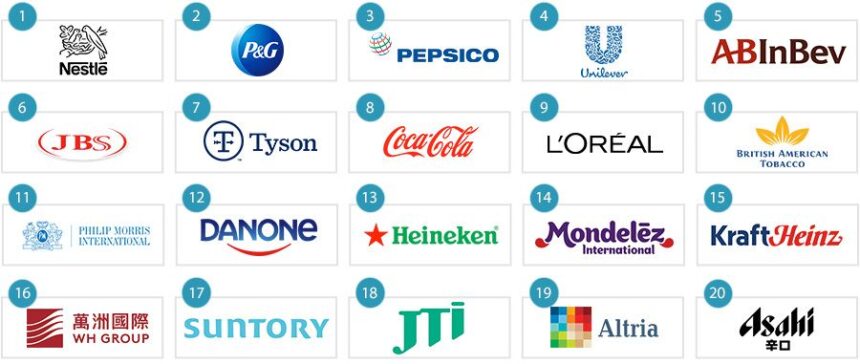The data produced by the consumer packaged goods (CPG) business is massive these days. Using this data, company heads may get a better picture of their rivals and make choices that will boost their company’s profile and bottom line. Big data also includes information gleaned from social networks and other massive data sets that firms have access to. Companies in the consumer goods industry must allocate funds wisely, maintain data organization, and conduct data analytics if they want to derive useful insights from their supply chain and retail operations.
Money is important at any level of your consumer packaged goods (CPG) firm.
If you were to lose money in the beginning, it would be understandable. A lower profit margin may be the result of startup expenses, lower order sizes, or an absence of leverage. Hopefully you considered this when you thought about how much money it would cost to start this business.
But you must have a strong, practical plan that shows you the way to the profit zone quickly.
How Can Customer-Focused Goods Companies Use Advanced Analytics?
Predictive analytics allows consumer packaged goods companies to track clients’ purchasing habits and adjust their advertising campaigns appropriately. Businesses can learn about the market in advance, try out new methods, and influence consumer purchases by analyzing this data.
Gaining insight into the elements influencing earnings in various client bases, brands, and markets is the main objective of price and promotional analytics. By learning how buyers react to price changes, it enables the establishment of optimal pricing. Customer behavior through social media interactions can also inform promotional and marketing solution strategy. Businesses can seize growth possibilities when they dynamically and holistically connect sales and marketing.
What the CPG Industry Can Gain from Analytics:
First, it simplifies SCM by making greater use of data and analytics to increase supply chain accuracy and efficiency while decreasing costs.
Planning, forecasting, and optimizing inventory helps save space, money, and resources, particularly for unmet inventories. This leads to effective inventory management.
Thirdly, it helps with targeted marketing by revealing which companies and items customers like most, which in turn enhances marketing strategy and the efficiency of spending.
Customer Effectiveness: Knowing your customers’ purchasing habits allows you to customize your communications to be more relevant, up-to-date, and suited to them.
What makes profit margin so important for consumer packaged goods?
Making money is more important than having a brilliant idea for a game-changing consumer packaged goods product. Your company can’t survive if you’re losing money. Your inability to sell your product to customers is directly related to the viability of your company.
For that reason, profit margins are paramount.
The good times will continue after you’ve achieved your target profit margin. The next step is to make it better. You may streamline your supply chain, increase your order size, and bargain for better prices from your vendors as your consumer packaged goods product becomes more popular.
There may just be a little shift in your profit margin from one year to the next (maybe only 0.2 percentage points), but even that is progress.
What follows is probably the most pressing question: how can one determine the profit margins of a consumer packaged goods brand?
Methods for determining a consumer goods brand’s profit margin
For the sake of clarity and simplicity, let’s take a look at an example of a consumer packaged goods (CPG) food product—organic strawberry jam! Please be aware that the example numbers provided below are fictional.
Your gross margin can be calculated by subtracting the cost of items sold from your net sales revenue.
Determine your cost of goods sold
The simple definition of cost of goods sold (COGS) is the money spent on producing a product that can be sold.
The following information is usually required:
- Expenses for all ingredients
- The sum of all packaging expenses
- Production or packaging labor expenses
- Production expenses (you’ll likely need to rent space to manufacture your CPG, won’t you?). However, you should not include in the expenses of your office, marketing, or salaries. The COGs are unaffected by them.
- Storage or freight expenses
Determine Your Net Sales
The amount of money you’ve made from sales after deducting any losses is called your net sale figure.
The formula for this is:
- Sales revenue (gross sales)
- Discretionary sale prices
- Decreases in monetary savings
- Negative items, broken goods, spoilage, etc.
Determine the gross profit margin for manufacturing.
After calculating your cost of goods sold (COGS) in step 1 and dividing it by your net sales (step 2), multiply the result by 100:
The formula is calculated by dividing the difference between net sales and COGs by net sales. X 100 is the percentage of manufacturing gross profit.
Changes to the profit margin of a consumer packaged good
We can be satisfied with 34%, but what if it’s insufficient? Even so, that is just your gross margin. A net margin accounts for additional expenses including distribution fees, marketing expenditures, and other overhead.
Either raising prices or decreasing COGS will improve your profit margin.
Therefore, let’s aim for a 40% profit margin with our organic strawberry jam. We investigated our product pricing extensively in our hypothetical scenario, and we found that $6 was the optimal markup. Therefore, let’s examine our COGs and, if possible, leave it alone.
Guess what? We’re going strawberry shopping, aren’t we? Looking into it more, it appears that there is no bulk discount!
That’s when we get in touch with our vendors to try to haggle for a lower price. Assume for a moment that they provide a 15% discount if we purchase all of our strawberries from them.
With that, our cost of goods sold drops to $632.50. Return to our formula:
The percentage is 37%, calculated by dividing ($1017 – $632.50) by $1017 and then multiplying by 100.
Approaching, yet still falling short. Imagine if we maximized our three-hour co working kitchen day rate. With the time we have, we can make more jam jars.
We could also make an effort to reduce the amount of wasted jam jars. That ought to be sufficient to raise our profit margin to the target level.


